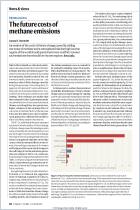
Regenerate Natural Forests to Store Carbon
Plans to triple the area of plantations will not meet 1.5 °C climate goals. New natural forests can, argue Simon L. Lewis, Charlotte E. Wheeler and colleagues.
Read or listen offline
Recommendation
Conventional wisdom holds that any new tree planted will contribute to global climate mitigation efforts, and that restoring the world’s forests is an adequate response to climate change. But the situation is not so simple, explains a team of scientists in Nature. Policy makers are misleading the public when they classify new commodity tree plantations as being part of climate-related reforestation efforts. Their research will give pause to anyone who has so far taken global reforestation pledges at face value, and will help focus the efforts of anyone concerned with mitigating climate change.
Take-Aways
About the Authors
Simon L. Lewis is professor of global change science in the Department of Geography, University College London. Charlotte E. Wheeler is a forest researcher at the School of GeoSciences, University of Edinburgh, UK. Edward T. A. Mitchard is senior lecturer in forest-change mapping at the School of GeoSciences, University of Edinburgh, UK. Alexander Koch recently obtained a PhD from the Department of Geography, University College London, on forests and the global carbon cycle.















Comment on this summary or Начать обсуждение